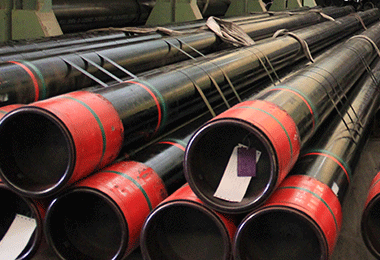Carbon seamless steel pipe for low temperature, characterized in that the alloy composition and content (percentage by weight) of the steel pipe are:
C≤0.13, Si≤0.30, Mn:0.40-1.20, P≤0.02,
S≤0.02, Cr≤0.20, Mo≤0.10, V≤0.10,
Ni ≤ 0.20, Cu ≤ 0. 20, Al: 0.01-0.008, and the balance is iron Fe.
The above components are carbon seamless steel pipes obtained after the raw materials are processed into tube blanks, thermal processing, cold processing and finished products.
ASTM A333 is the standard specification for seamless and welded carbon and alloy steel pipe for cryogenic service or other applications requiring notch toughness. The standard covers several ferritic steel grades: Grades 3, 4, 6, 7, 8, 9, 10 and 11.
The quenching temperature of low-temperature carbon steel pipes is A3+(30~50)℃. In practice, the upper limit is generally taken. High quenching temperature can speed up the heating speed of low-temperature carbon steel pipes, reduce surface oxidation, and improve work efficiency. In order to homogenize the austenite of the workpiece, sufficient holding time is required.
If the actual furnace load is large, the holding time needs to be appropriately extended. Otherwise, insufficient hardness may result from uneven heating. However, if the holding time is too long, the grains will become coarse and the oxidation and decarburization will be serious , which will affect the quenching quality.
Grade 6 Pipe Chemical Requirements:
| Element |
Composition (%) |
| Carbon (max) |
0.30 |
| Manganese |
0.29-1.06 |
| Phosphorus (max) |
0.025 |
| Sulfur (max) |
0.025 |
A333 Grade 6 Pipe Mechanical Requirements:
| |
Psi |
MPa |
| Tensile Strength (min) |
60,000 |
415 |
| Yield Strength (min) |
35,000 |
240 |






.jpg)
.jpg)

.jpg)




